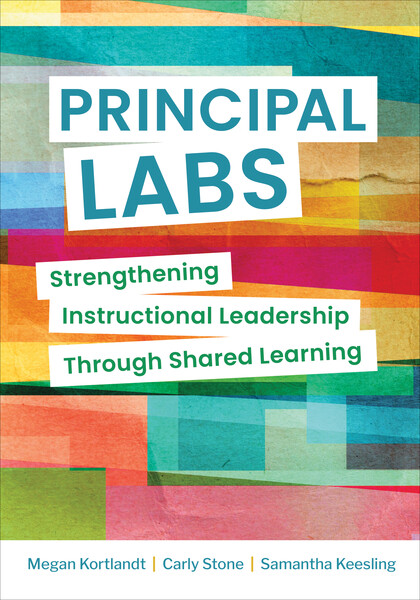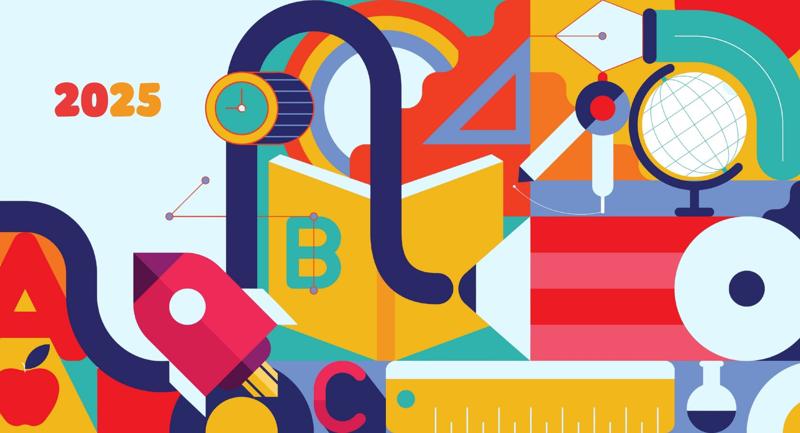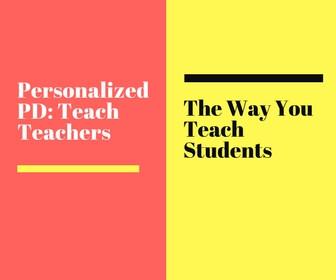We’ve all felt contention in professional learning spaces. Negative mindsets, distracted behaviors, and dominant voices can interrupt or overtake even the best content. Many professional development facilitators have been led to believe that norms—shared expectations of how a group operates—will solve their engagement issues. But there is a wide range of how both facilitators and participants feel about them.
Whether leading professional learning or participating in it, some of us hate norms with a fiery passion, some of us believe they’re essential, and some of us ignore them altogether. It’s not surprising that there are such varied responses; there’s a wide range of how they’re introduced and used, too. Sometimes they feel like punitive rules. Other times, good norms are quickly introduced but never lived into during the rest of the session. It’s hard to strike a meaningful balance that honors adult learners’ expertise.
It would be tempting to abandon norms altogether, but we’ve seen them work often enough that we know this isn’t the way to go. Since co-authoring Principal Labs: Strengthening Instructional Leadership Through Shared Learning, we have continued to facilitate professional learning for teachers and leaders in several Michigan districts. We’ve noticed that changing a norm’s wording or the way in which we engage with it can have a big impact on how educators engage. This made us curious: When do norms feel essential, and when do they fall flat or cause frustration? How can we use them in ways that work for more educators? Designing and facilitating any professional learning is complex work. Though there is no perfect approach, we have found three components that move norms away from being a passive practice and toward being a critical component of professional learning.
Rethinking Norms
1) Norms should anchor us in our purpose and beliefs.
You’ve probably been in a professional learning session where a facilitator presented a list of norms that felt like a slap on the wrist, including what you should and should not do: “watch your airtime”; “don’t use your phone”; “listen when others are speaking.” Instead of simply naming behaviors, we’ve found that it’s helpful to make explicit the values behind those actions.
This past year, when we facilitated a series of professional learning for teachers, coaches, principals, and central office leaders, we set forth an overarching belief to hold in common before we introduced the norms. Before we could get into the details of how we’d work together, we needed to anchor ourselves in the why. So, we explained, “We believe that everything we do in this space is about learning and growing together in service of our teachers and in service of our kids. To live into this belief, we have the following norms.”
Instead of simply naming behaviors, we’ve found that it’s helpful to make explicit the values behind those actions.
Introducing the norms themselves is also critical. For example, in online professional learning, norms often tell us how to interact on the platform, which can have the unintended consequence of reducing engagement to low-level behaviors like “turn your screen on” and “use the chat” rather than encouraging participants to emotionally and intellectually invest.
To help write more effective norms, we ask "why" until we move from behavior to value.
Why do we want participants to keep their screen on and use the chat?
Why is it important for them to interact with one another?
Why do we value collaboration in this session?
And there’s the essence of the norm: Diverse perspectives help us grow.
When we anchor norms in beliefs rather than the behaviors behind interactions, we’ve found that educators participate more genuinely. For example, a lot of the professional learning that we facilitate centers around live observations in real classrooms. It's essential that we create safety around how we discuss what we see and hear, but we also don't want people to feel like they have to shy away from critical learning opportunities. Instead of having norms like “be nice,” we anchor in the belief that we are all learning, which is hard work. Rather than passive acceptance or playing along, participants are more likely to authentically engage: to give and receive feedback, to ask questions, and to connect with others to move the work forward.
2) Norms should be dynamic and responsive to group needs.
Classroom teachers know that they need to design lessons with learners’ needs in mind, but too often, this fails to translate to adult learning. Norms should be adaptive to the needs and styles of different learners and to the learning topics at hand. When we’re designing professional learning, we ask ourselves:
Who are our participants? (What do we know about them, their dynamics, and their context?)
What outcomes do we have for these participants and this learning?
What does engagement need to look like to be successful in these outcomes?
For a group that is made up of people in administrative and other leadership roles who are designing professional learning plans, their norms might be:
Engage as a learner, not an evaluator.
Honor the learning that teachers and students are doing.
Recognize and interrupt deficit language or perspectives.
Consider how each participant’s experience and identities shape their perceptions of what they see and hear.
It’s also important to adapt norms to ensure that learners see themselves reflected in the norms and as valued members of the team. There isn’t one “right” way to do this; instead, it’s important to consider what authentic ownership of norms would look like for each group. When we work with a small group consistently throughout the year, we might facilitate a protocol where every person contributes to crafting the wording for norms around a shared belief, like a school mission or vision for instruction. When we have a bigger group or multiple groups within a larger session, though, full co-creation doesn’t always make sense. Revising existing norms based on participants’ contributions or adjusting them throughout a series as participants’ needs change also helps us to center norms around the learners.
For example, toward the end of a year-long series on continuous improvement, we noticed that some team members were feeling discouraged by having to change course from plans that they’d put in place earlier in the school year. Readjustments are a normal part of the process, but they needed to feel efficacy around monitoring and adjusting. We saw some teams who were taking ownership of problem solving, and we wanted to recognize that dynamic with the whole group. With the groups’ support, we crafted a norm about how they had the power to influence the outcomes they wanted to see: “Own where we are now and how we’ll move forward.” It was a timely addition that helped them to lean into the efficacy of their team and their role in the continuous improvement process.
3) Norms should be authentic to the group throughout the learning process.
Norms without consideration of the broader learning context have little to no influence on the learning community. Facilitators might flash powerful norms on the screen and move on, which creates little impact. Truly meaningful norms are authentically embedded into both learning design and facilitation.
Truly meaningful norms are authentically embedded into both learning design and facilitation.
We do this partly by how we introduce norms. They shouldn’t read like a checklist. Facilitators should allow time for people to wrestle with what each norm means to them and how it will shape their interactions. One way is to ask participants to read the set of norms, then discuss with a prompt like:
If norms are written from a behavioral stance, asking for reflection like this can feel contrived or even insulting. Adult learners are not likely to find meaningful reflection in a norm like “make sure everyone at your table speaks at least once.” But, when they can make sense of a statement that is reliant upon interpretation and grounded in productive beliefs (like “we grow when we reflect and hear other perspectives”), they own their interpretation more fully and are empowered by their work.
Finally, if the PD leaders’ design and facilitation don’t also live into the set norms and beliefs, participants will quickly become disengaged. It’s not helpful to introduce norms centered around collaboration or discussion and then lead a session where facilitators do most of the talking and participants passively listen. Facilitators can’t say they value diverse perspectives and then only lift the voices of those who agree with them in a session.
Though norms aren’t the perfect solution for everything that can go wrong in PD, thoughtfully integrating them can have a lasting effect on the community you create. Anchoring norms in beliefs, making them dynamic and responsive, and embedding them authentically throughout the learning design can ground teams in productive actions aligned with what the group values. Making the time and space for the intentional use of norms creates a culture where everyone can learn and experience the efficacy they need to carry the learning forward.
Principal Labs
A flexible structure for principals to learn with and from each other to become better instructional leaders.









